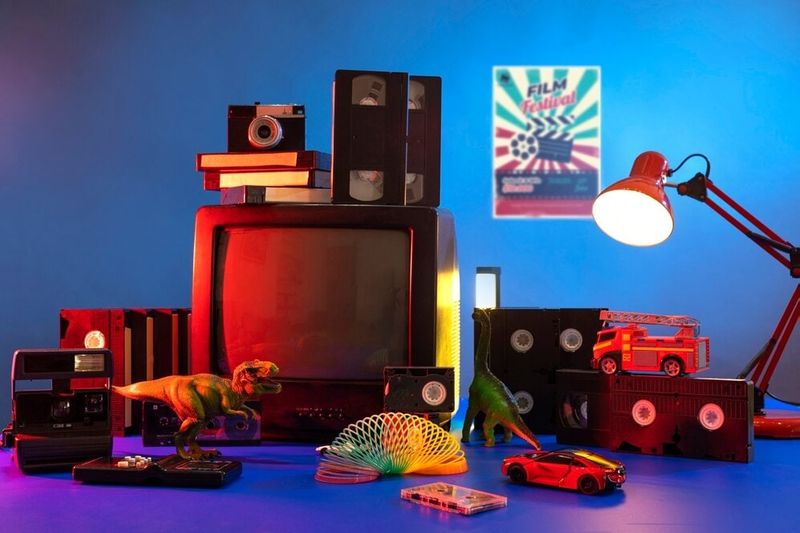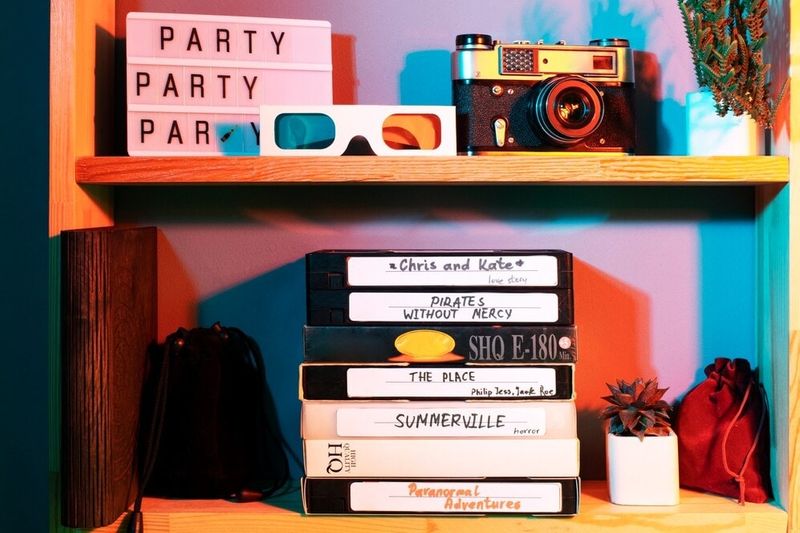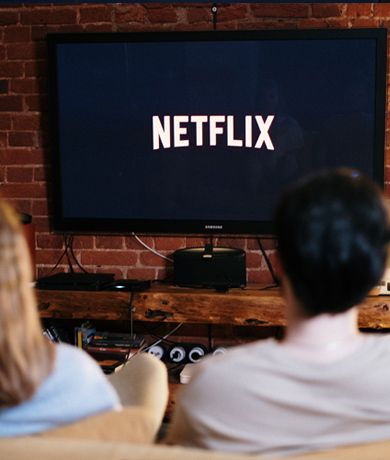Publication date January 8, 2024
Back to the 90s: Why Everything Old Feels New Again?
Remember ripped denim and scrunchies? Bop-it battles and dial-up screeches? Those weren't just junk in the attic, they were the soundtrack of a simpler time. It was like we all were outside come rain or shine socializing while being social, not social media-ing while on social. No phones glued to our fingers, no feeds controlling our feelings.

Recommended articles
When I moved from the '90s into the 2000s, I think the mistake I made was putting my denim shirts and skinny legs jeans in the back of the cupboard, the old record in the garage, and the video cassettes in the bin. But now I wish I hadn’t.
My clothes are now considered ‘vintage’, and I could be making an extra side income from my vinyl collection, and those dusty box sets are once again all the rage. If you’re a 90s kid (Even if you’re not) you know how just the 90s Nostalgia feels.
90s trends are blasting again, kids are rocking style like it's brand new. But what's with all this 90s love? Was it the Tamagotchi panic? The dial-up drama? Or maybe the good stuff - skipping rocks, building forts, and hearing "Macarena" everywhere.
A Lecturer Dr Renee Middlemost, says the sense of nostalgia that seems to be gripping Generation Z is influenced, by the huge amount of pop culture content they are faced with.
I also believe that the biggest influence on why today's generation is quickly adapting to 90s trends again is pop culture. We all have a few celebrities that we admire and see as ideal so we feel good to follow what they’re following.
For instance, current stars like Dua Lipa, Harry Styles, and Olivia Rodrigo often incorporate 90s fashion and music into their work. This directly influences their fans' style choices and music tastes.
An expert in pop culture, Dr Middlemost says "Every generation looks back at past trends,” "My background is cult cinema and there has been a lot done around nostalgia in cult cinema and what people become nostalgic for, even things that were not around when they were born.”She further says it is interesting to see what is happening now and she has seen it in her students who are all into watching shows like Friends.
She believes that it definitely has something to do with the way today’s generation is watching media these days. With platforms like Netflix, and Apple TV around, people are constantly suggesting shows to each other, and fewer people are seeking out new things, which has ultimately narrowed out tastes.
Dr Middlemost also says, "The whole sharing thing with Netflix and recommendations that has narrowed the tastes of people in regards to television viewing has been seen in cult cinema, too. It's all been done by word-of-mouth. And with the sharing of videos and content, the online world has made the pop culture loops come around much more quickly than before."

Whether it’s cinema, TV, music, or fashion, 90s nostalgia is pervasive in almost all forms of entertainment and although looking back to the good old days is not new, it seems the passion that '90s pop culture elicits is.
That fascination with the last decade of the last Millennium was pointed out in the recent collaboration by Millennial maestros Charli XCX and Australia's own Troye Sivan in their collaboration in 1999.
The two hark back to the days of daggy, singing 'I just wanna go back, back to 1999/Take a ride to my old neighborhood/ I just wanna go back, sing: 'Hit me, baby, one more time', All while dressing up like Kate and Leo in the iconic Titanic (1997) scene on the ship's bow and celebrating the leather-clad hero Neo of The Matrix while working on their iMac desktop computer.
While that’s true we can’t deny the love for so many things from the 90s today but why is everyone digging the 90s? We grew up with the internet and smartphones, so why's this blast from the past stuck on repeat?
There are many theories on why 90s pop culture has come of age once again, many argue that the 1990s produced some of the best or at least, the most influential television, music, and movies. The 1990s indeed was a unique period with rich modern history in terms of technology, and social connection.
At the beginning of the decade, mobile phones were for the loaded and famous and did nothing but make and receive calls. At that time the Internet wasn’t a thing, google and social media were nothing but made-up words.
Over the years, as accessibility has changed how the later generations watch media content, streaming services have also changed how they listen to music or watch movies and the comeback of '90s melodies.
90s nostalgia is constantly changing the way we consume and interact with pop culture, and it has certainly changed the way people consume music.
For example, in online music streaming services like Spotify, you can search and listen now to whatever you want, and listen to your heart's content. You don't have to go to the market and buy the CD anymore, and that has changed what people listen to as well, for obvious reasons.
With less cost entry and less time, listeners can get to the strange and weird stuff quicker. The young generation may still get peer-pressured into listening to what their friends want them to listen to, but the other stuff is also easy to find. In the '90s, original music was difficult to find and harder to purchase, and many times those sold in music stores were covers. Now people can its originals on streaming services, not covers.
I believe the 90s revival isn't just a fashion statement, it's a yearning for simpler times. But can we replicate the raw connection of dial-up friendships in a world of filtered selfies? Can we recapture the thrill of renting VHS tapes when every movie is a click away?
Or will the future be shaped by entirely new forms of entertainment and relationships? Share your thoughts in the comments below!
Frequently Asked Questions
Q. Why is the 90s so nostalgic?
There are many reasons why the 90s feel so nostalgic for many people, especially those who grew up or came of age during that decade. Many believe reminiscing about the '90s is comforting because it gives us a connection to times in our lives when we felt more free, adventurous, and connected to other people. But now things are different, with social media and increased work stress we don’t feel the same and wish we could go back to the 90s.
Q. What is the 90s aesthetic called?
It’s hard to tell one specific term that perfectly covers the entire 90s aesthetic, as it was a decade filled with diverse and shifting trends.
But, some of the most common terms used to describe different aspects of the 90s aesthetic, include the Grunge look with its ripped jeans, flannel shirts, and Doc Martens boots, while neon lights pulsated through fashion with bold colors and shiny materials. Minimalism offered a clean counterpoint, emphasizing simple silhouettes and neutral tones. Sporty influences blended seamlessly with everyday wear, as sneakers, tracksuits, and crop tops took center stage. Ultimately, in the 90s people expressed individuality with mixing and matching trends to make their own.
Q. What is the 90s remembered for?
The '90s are remembered for so many things, it was a decade of relative peace and prosperity: The Soviet Union fell, ending the decades-long Cold War, and the rise of the Internet ushered in a radical new era of communication, business, and entertainment. Additionally, from the rise of grunge music and the explosion of hip-hop to the emergence of iconic TV shows and blockbuster movies, the '90s was a time of creativity, innovation, and cultural shifts.




